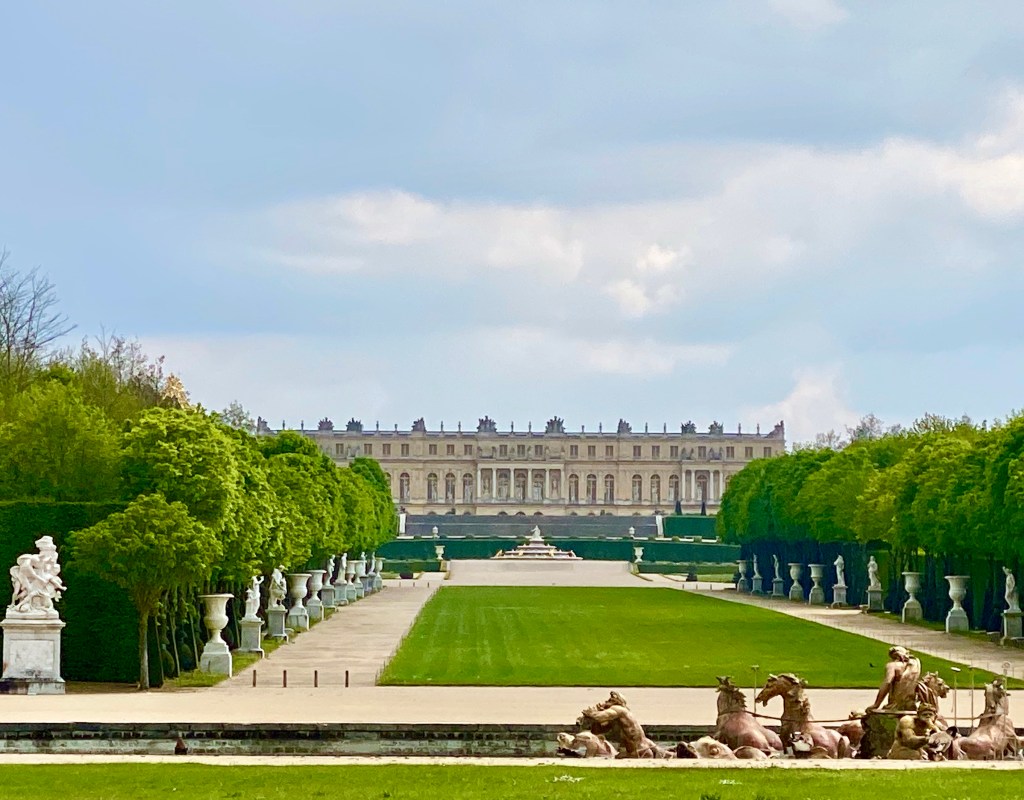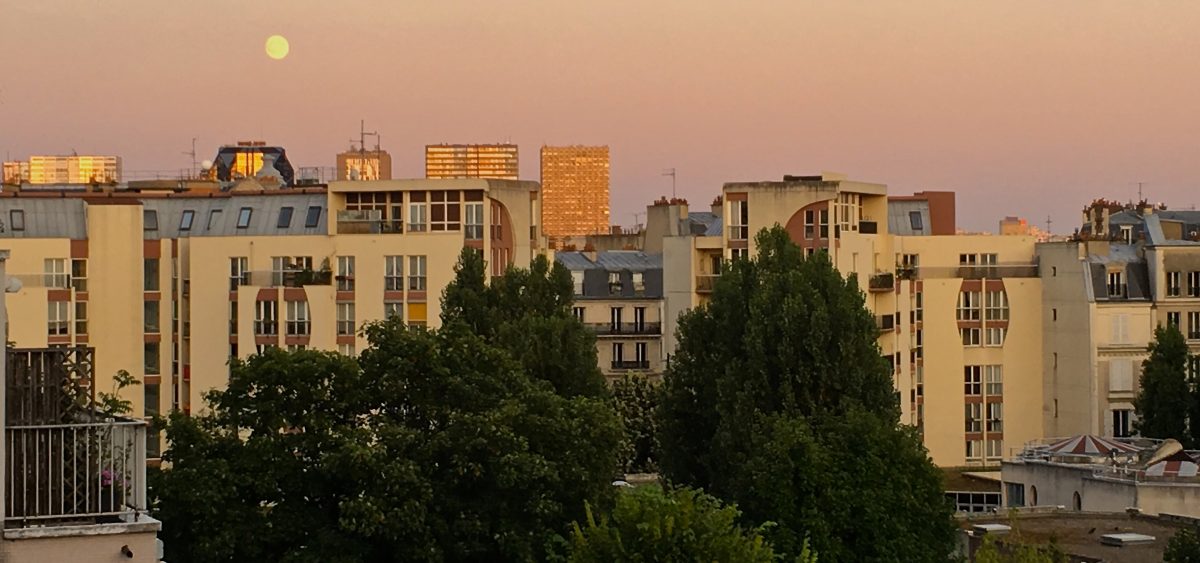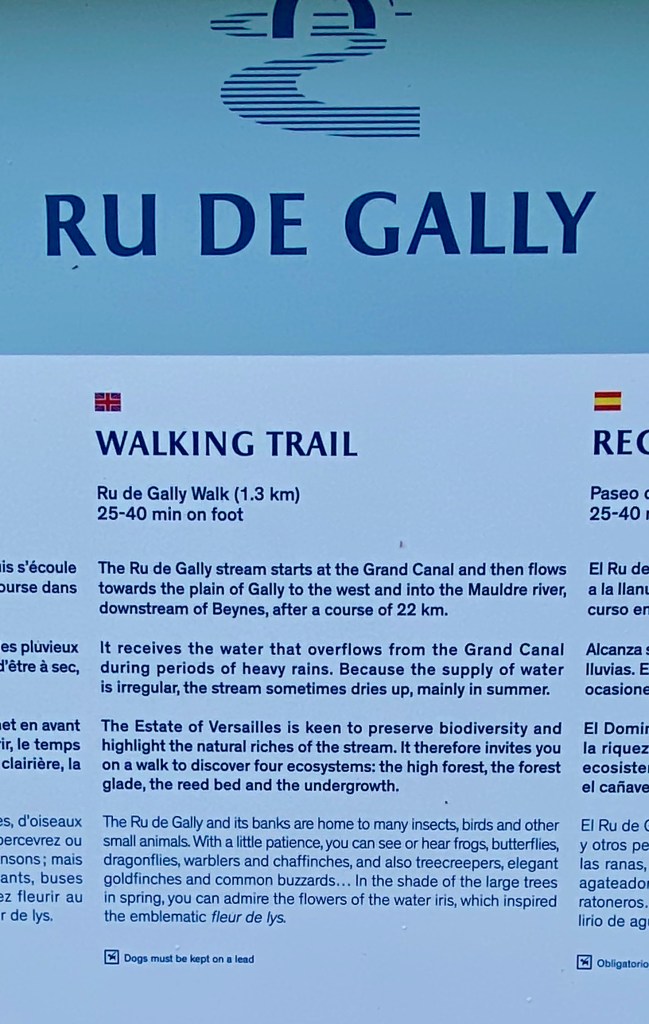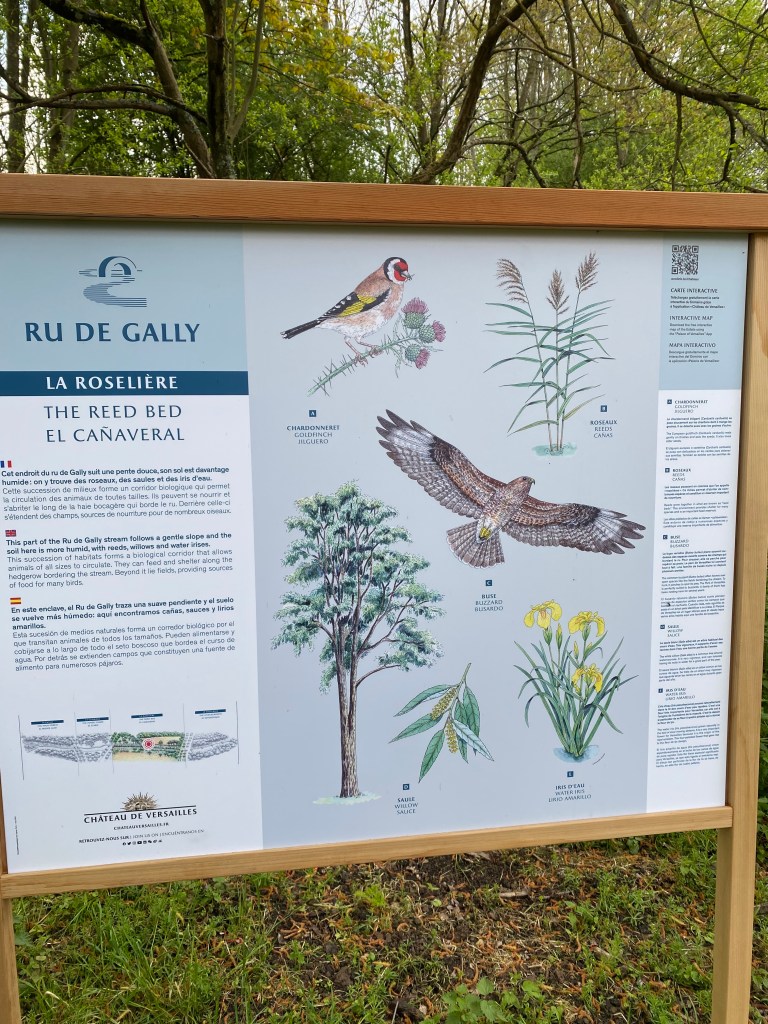Last week, I took my second longer-than an hour-excursion away from home. It was the last day of the 10km boundary for us in France, meaning that unless there was an extremely important reason we could not venture further than 10 km (about 6 miles) from home. And we had to be back by 7pm which is curfew. On Monday, the restriction was lifted and we can now go anywhere within France without an attestation. On Sunday, I traveled by train and car thirty kilometers but no one was checking. In fact, I’ve not seen any police checking anyone in the six weeks since the semi-confinement started.
I took the RER A out to Saint Germain-en-Laye where Barbara picked me up and drove us to the Parc de Versailles. “Situated to the west of the palace, the gardens cover some 800 hectares of land, much of which is landscaped in the classic French formal garden style perfected here by André Le Nôtre. Beyond the surrounding belt of woodland, the gardens are bordered by the urban areas of Versailles to the east and Le Chesnay to the north-east, by the National Arboretum de Chèvreloup to the north, the Versailles plain (a protected wildlife preserve) to the west, and by the Satory Forest to the south.” Wikipedia

Barbara told me that in the thirty-four years she has lived in or near Paris, she had no idea that this park existed. Everyone knows about the Palace of Versailles, it is one of the top five tourist destinations in Paris. The palace and the formal Versailles Gardens, also designed by Le Nôtre, have been closed since last October; (we are all crossing our fingers that museums and heritage spots will re-open May 19). The park has stayed opened and is accessed by two gates. We parked near Porte de Saint Antoine. We entered on foot, carrying our picnic lunches, to make a day just walking and exploring. Barbara had come the week before so she did the leading and I did the following. We walked a broad dirt road with trees in bloom on either side. After five hundred yards or so, we turned right onto another beautiful, wide dirt road leading towards the Grand Canal. We passed the Petite Trianon and Angelina’s (famous for it’s chocolate) café. The café was open in that one could buy goodies but there were no seating areas inside and the large terrace outside was also closed. As we neared the Grand Trianon, it was time for a bathroom break.
We were now at the Grand Canal. From the air, the Grand Canal looks like a large cross made of water. “With a length of 1,500 metres and a width of 62 metres, the Grand Canal,[14] which was built between 1668 and 1671, physically and visually prolongs the east–west axis to the walls of the Grand Parc. During the Ancien Régime, the Grand Canal served as a venue for boating parties.”-Wikipedia. We were at the tip of the right arm where we found another closed café. We plotted our walk. It was possible to walk up and down each section next to the water until we returned to where we started. We guessed the round trip might be around 4-5 miles. As we passed the bottom of the cross, we were treated to a view of Versailles Palace and the formal gardens unhampered by tourists. It’s hard to gauge distances when air and water combine but it seemed that right in front of us, as we looked at the palace, was the large pool of the Apollo Fountain “which was constructed between 1668 and 1671, depicting the sun god driving his chariot to light the sky. The fountain forms a focal point in the garden and serves as a transitional element between the gardens of the Petit Parc and the Grand Canal.” Wikipedia. Black and yellow tape as well as a multitude of signs reminded us that all was closed from the now until further notice (which we hope will be May 19!).

We walked up the other side of that arm of the cross. There were runners, families with strollers and dogs, but not a huge number. It is not clear to me whether this park is a secret to even Parisians or just to us ex-Pats who, in our efforts to steer clear of large masses of tourists, have regrettably missed this wonderful playground. It is a place for sporty people as well as families and dog walkers. In non-pandemic days, one can rent a boat and row on the Grand Canal which must be just lovely.
As we rounded the tip of the left arm of the cross, the heavens opened up and…. it hailed! Little tiny pebbles of hail that don’t hurt or bruise like the large, round, ping-pong ball sized pieces of hail do. It’s unusual to see hail in early May. But that line “it’s unusual that….” should probably be thrown out the window with everything that has, in fact, changed since climate trauma is on the rampage. We happened to be under a ceiling of leafy green trees so we put up an umbrella and waited out the hail. We watched two swans completely unbothered by debris falling from the sky. One just floated around majestically. The other would spread her wings and race forward about three yards, at an amazing clip, stop, look around, then do it again. Do swans show off for people? Something to google.
When we arrived at the head of the cross, all precipitation had stopped. We found a place to sit on wide steps that led down to an empty, large, round area that clearly was for water. We pulled out our picnic lunches. We could see the Palace in front of us in the distance. We had a lively conversation about the tricks light and water and distance can play on the eye.
For the last leg of our walk, we detoured and walked along the Ru de Gally, a stream and nature trail that starts at the Grand Trianon and ends, 1.3 km later, at the Ferme de Gally. We intersected the trail half-way towards the farm. The farm is a family attraction. Children were petting donkeys. Both regular and petite-size horses stood slowly munching their lunch, and in the distance was a large field of sheep. All along the nature trail are signs describing the type of area that we were walking in detailing the birds, fauna, and little animals that can be found there.
Making one last pitstop at the toilets, we arrived at the car just as the skies opened up for a second time. This time the rain fell in strong, forceful drops beating on the car the entire way back to the RER A in Saint Germain.
“In 1979, the gardens along with the château were inscribed on the UNESCO World Heritage List, one of thirty-one such designations in France. -Wikipedia
In 2014, Alan Rickman made a film called The King’s Gardens or A Little Chaos starring Kate Winslet and Matthias Schoenaerts. It happened to be on TV five days after this excursion and, although mostly fiction, it was fun to see parts of the park I had just been at, and get an idea of the difficulty building these gardens, especially getting water to run twenty-four hours a day. Most of the characters are fictional. A garden much like the one portrayed in the film does exist today at Versailles known as the Salle de Bal.
A bientôt,
Sara










I love this post! More France pictures! 😄
LikeLike
Lovely description that brings to life the experience. Now you should write a parallel entry about all the peasants who were forced into hard labor to build this gardens, and about all the Common grounds where poor people used to be able to hunt were enclosed and appropriated by the state for exclusive use by the ruling class. Any peasant caught “poaching” on what used to be Commons was subject to the death penalty.
LikeLike
I enjoyed reading your article and seeing the great pics along your route.
LikeLike
Your photos are lovely Sara but it’s even more beautiful in person. The biodiversity trail is wonderful and Sunday the goats + sheep were in the front field close to the road running around making noise with their bells and babies to the delight of all. So glad I finally discovered this natural wonder which is practically in my backyard! So goes the say…”the grass is always greener…”
LikeLike
One of my happy places. I wish you’d told me that you were coming out :(.
LikeLike